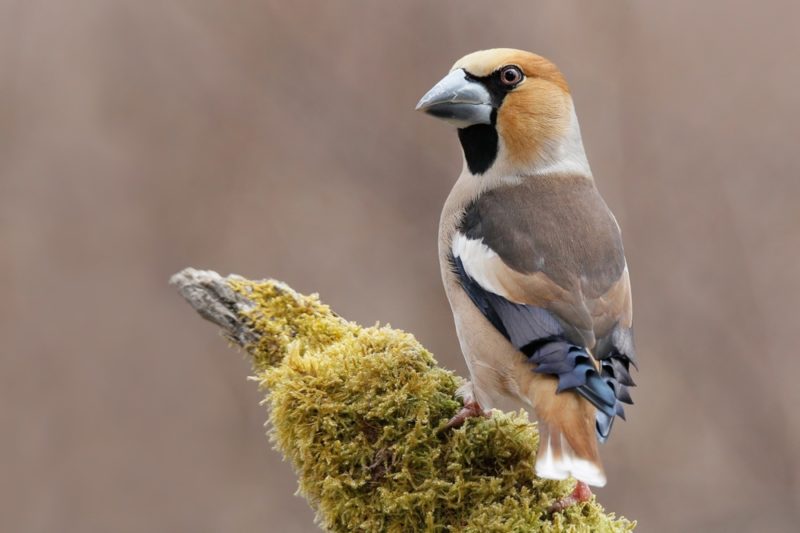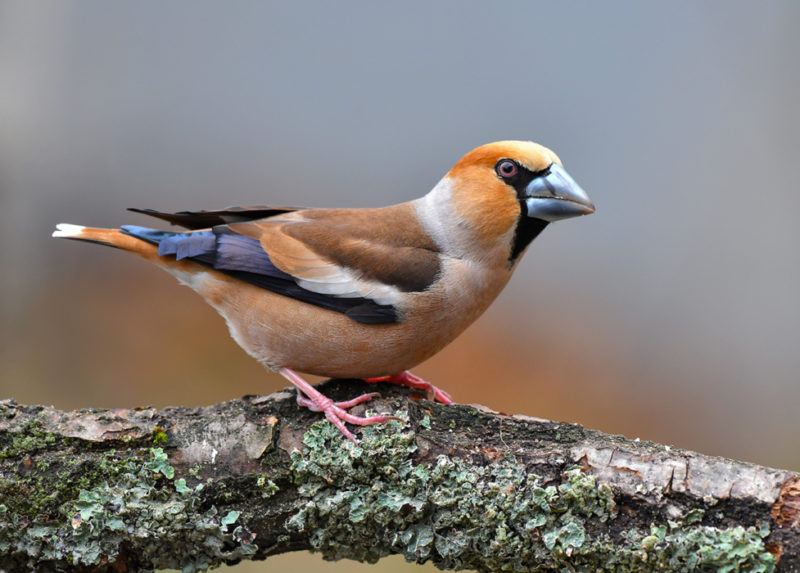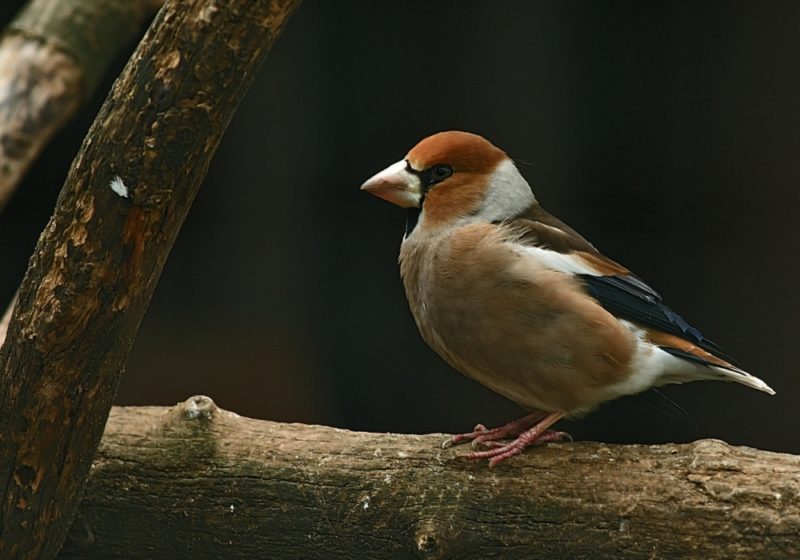The common oak tree was named for the remarkable beak - disproportionately massive, strong and sharp. The secretive bird rarely manages to be seen: at the slightest danger it instantly takes off and skillfully hides in the foliage of trees.
Material Content:
Features and habitat of common European oak
Dubonos is a member of the finch family, close relatives - crossbills, bullfinches, finches, carduelis, siskins and canaries. The species range extends to all of Eurasia from Western Europe to Alaska, the Far East, and Japan; there are almost no oak trees in Scandinavian countries only. During wintering flights, birds reach North Africa. Large populations live in the Caucasus, Spain, Crimea, and Bulgaria.
Dubonosy like to settle in deciduous groves, sometimes found in sparse coniferous and mixed forests. Often populate urban squares, parks, abandoned and cultivated gardens, vineyards.
Birds can skillfully camouflage themselves in foliage, so they rarely come across to humans. Dubonosy are considered singers, but they only chirp in the spring during the mating season, the rest of the time they are silent. The singing of a doubonos resembles a jerky "chirping," occasionally turning into a long whistle.
The appearance of the bird
The description of the species includes the characteristic external features of the oak tree:
- The average length is 18-20 cm, the weight ranges from 50-60 g, the females are slightly smaller than the males.
- The body is dense, stocky.
- The head is round.
- The beak is large, conical in shape, gray-blue in warm times, and pale yellow with a cream tint in cold times.
- The eyes are round with a sandy iris, black pupils.
- The wings are pointed at the ends, the wingspan reaches 32 cm.
- The tail is short, up to 5 cm.
- Legs are low gray-pink.
The birds attract with elegant plumage, the color combines several shades:
- brown head with red;
- around the beak, the eye is black edged, a dark mark on the throat;
- the breast and abdomen are pinkish-gray;
- shoulders, upper back chestnut-colored,
- brown-brown nails in tone of the “hat”;
- tail and fly feathers are black, shiny with a white transverse stripe.
Mature males are colored brighter, in young birds and females the plumage is paler with a transverse pattern on the sides and on the head in the form of rare specks and curls.
Character and lifestyle
Ornithologists note the calm, even slow temperament of birds. They can sit motionless in one place for a long time, fly fast, but heavily. In the air they move in groups or singly for short distances along an arc-shaped trajectory. The flight altitude does not exceed 250 meters.
Birds are kept near trees, which become a shelter at the moment of danger and a source of food. Because of natural timidity, they rarely go down to earth, move with heavy jumps or walk slowly, awkwardly waddling over. In times of danger, oak-mosses are bold and quick-witted, able to defend themselves.
In the northern regions, before the onset of cold weather, birds fly away to winter to the south, from March to May they return to their nesting sites. In regions with a mild climate, they lead a nomadic lifestyle: they fly in search of food for short distances within the same area.
Breeding of oak tree
The sexual maturity of birds occurs in the second year of life. In March-April they create pairs. The male opens feathers, jumps on the female, jumps, chirps. If she accepts courtship, the birds gently rub their beaks. Then the couple masters a nest in the crown of the tree at a distance of 1.5-6 m from the ground. The material for the construction are twigs, twigs. The bottom is lined with dry grass, leaves, moss. Dubonosy build round strong nests up to 20-22 cm in diameter, 9-10 cm in height.
In early summer, the female lays 4-5 pale green patterned eggs and hatch them for 2 weeks. Occasionally it is replaced by a male. Chicks after birth until 15 days remain in the nest. Parents bring them food and guard. In July, the young learn to fly, each brood is kept separately. In August, the chicks prepare for an independent life, gradually stray into groups. In autumn, birds leave their nesting sites. During the warm season, oak stands make only one egg-laying.
Life span
Under natural conditions, oak tree stands live for 5 years. The maximum age recorded in Europe is 12 years 7 months. In captivity, the life span is increased to 15 years, if the bird is properly kept, balanced, fed, monitored and treated without delay.
In the wild, feathered animals die prematurely due to lack of food, accidents, diseases, chemicals, which are sprayed with plantations from insect pests. Weather anomalies become a serious danger: severe frosts for nomadic birds, hail, hurricanes, storm during flights to winter over the sea. Young growth perishes at a meeting with predatory mammals and birds.
Features of keeping at home
Dubonosov wound up less often than other songbirds. For the first 3-4 weeks, the bird hides and runs wild, but gradually becomes bold and gets used to the person. To keep the oak tree at home, you will need a metal spacious cage, not less than 50 cm in length, width and height. He easily bites wooden bars. The habitat is periodically cleaned as it is contaminated with food residues, droppings.
The diet includes:
- sunflower seeds, millet, rape, pumpkin, maple, oats, ash, flax;
- seeds of cherries, cherries, bird cherry, plums;
- berries of mountain ash, sea buckthorn, elderberry, hawthorn;
- apples, peas, cucumbers, pears;
- greens: lettuce, dandelion, plantain, cabbage;
- cedar nuts;
- ready-made feed for forest granivorous birds from pet stores;
- in the spring they bring fruit tree branches, lilacs with swollen buds;
- twice a week for a change give cottage cheese, chicken yolk, worms;
- to improve digestion, you need clean sand, chalk.
Every day the bird changes the water in the drinking bowl and bathing tanks. The claws of the pet are constantly monitored and shortened if they grow strongly and interfere with normal movement. The place of the cut is done 2 mm before the blood vessel, the latter is seen through the stratum corneum of the claw.
Interesting Facts
Representatives of the species notice curious features:
- Dubonosy cleverly cut the bones, sometimes they discard the kernels and immediately take the next fruit. Presumably they are fond of breaking a hard shell.
- The main remedy for the oak tree is a sharp strong beak. Angry bird bites painfully, squeezing force exceeds 45 kg.
- The first days, parents feed the chicks only with insects and larvae. Vegetable food is added when the young grow stronger.
- In autumn, oak-grubbers open galls on the petioles of aspens and poplars, feed on aphids, which settled inside.
- The saturation of the color inside the species varies depending on the area of habitat: in Europe, Crimea, the colors of the plumage are brighter, in Kyrgyzstan it is dimmer.
- Dubonosy are monogamous feathered birds that pair up once and remain faithful all their lives.
Flocks of oak trees seriously harm gardens, orchards and vineyards: they peck swelling buds, eat ripe fruits, vegetables. A group of 6-7 individuals can completely empty the cherry tree.

















